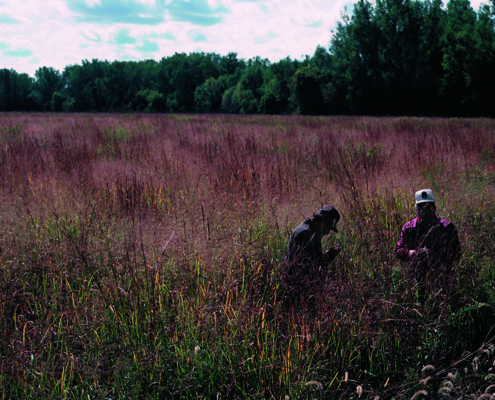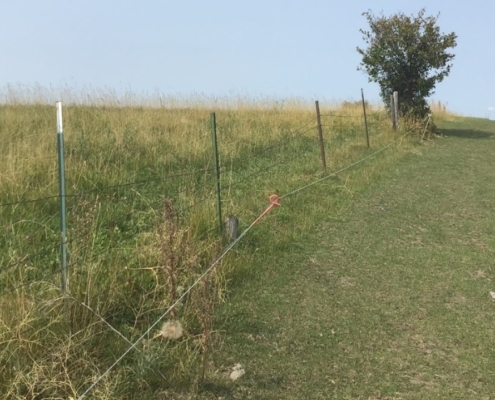Tag Archive for: Sheep and Goats

For the Love of the Wild: Livestock Pastures as Wildlife Habitat
Farmers, ranchers, and researchers have come to understand that the functionality of ecosystems on farms is largely dependent on plant and animal biodiversity. Functional ecological processes and services are facilitated by biology, necessitating maintenance of biological integrity and diversity in agroecosystems.
By Lee Rinehart, NCAT Sustainable Agriculture Specialist

Building a Strong Foundation for Working with Livestock
Years of farming and visiting other farms, combined with recent education in soil health, have convinced me of this: We can best serve people, the land, and the livestock by learning to care for the soil FIRST. That’s why NCAT’s Livestock and Grazing Team began with this foundation when they gathered to teach a three-part series for beginning livestock producers.
By Linda Coffey, NCAT Livestock Specialist

The Journey to a More Holistic System of Ranching
After many different and varied careers, Doug Lair settled into ranching 25 years ago, returning to a legacy started by his great-great grandfather, who passed down a team of mules and the family brand to his great grandfather. I recently had a conversation with Doug about his efforts to create a more holistic system of ranching.
By Andrew Coggins, NCAT Rocky Mountain West Regional Director
By Andrew Coggins, NCAT Rocky Mountain West Regional Director

Lambing, Kidding, and Calving on Pasture
In this video, Margo Hale, Tracy Mumma, Linda Poole, and Linda…

Overgrazing – A Chronic Soil Disturbance on Grazing Lands: Part II
If we’re going to build the health of anything – whether that’s our own health or the health of grazing lands – and we are causing damage by our management actions, then our first priority should be to stop the damage.
By Justin Morris, Regenerative Grazing Specialist
By Justin Morris, Regenerative Grazing Specialist

Virtual Farm Tour: Risk Management at Windset Ranch
Hear from farmers Jeremy and Nina Prater about their family’s…

Safety for Sheep and Shepherd
When NCAT’s Livestock Team recently held a series of webinars for people considering a new livestock enterprise, many folks indicated they were thinking of getting sheep. Sounds good to me!
By Linda Poole, Regenerative Grazing Specialist

Virtual Farm Tour: Risk Management at Uncle Jerry’s Farm
Hear from farmer Deborah Coleman about her farm, Uncle Jerry’s…

Building Strong Foundations, Part 3. Choosing Livestock for Your Farm
In the final session of the three-part "Building Strong Foundations"…

Building Strong Foundations, Part 1. Soil Health: Your Grazing Foundation
Wondering how to get started with livestock? You've come to the…

